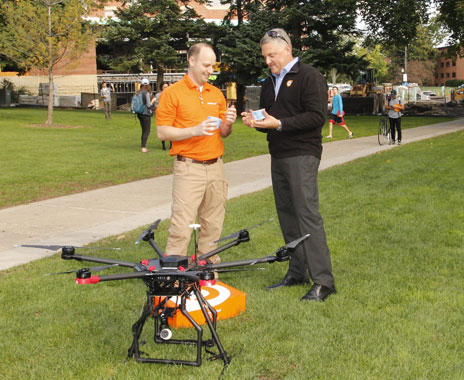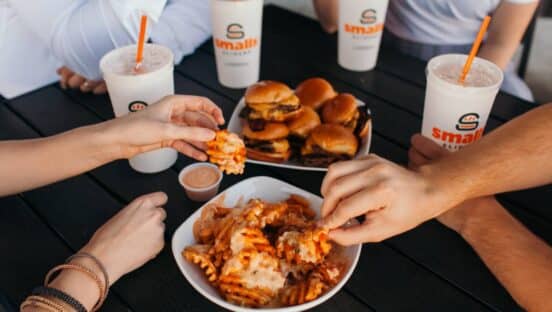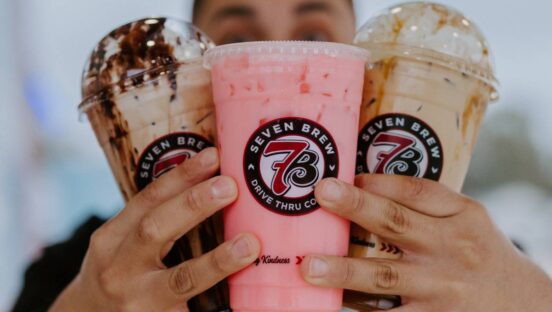As if fast-food executives don’t have enough on their plates, now there’s yet another culturally invasive item to add to the worry list: drones.
No, you don’t have to worry about getting attacked by killer drones. Rather, you have to worry about employing pricey drones for food delivery. Drone food delivery is creeping one step closer to common.
Way back in August, Domino's Pizza successfully tested pizza delivery by drone in Auckland, New Zealand. In September, Google’s parent company, Alphabet, successfully tested drone delivery of Chipotle burritos at Virginia Tech in Blacksburg, Virginia. Then, in early October, a fro-yo franchisee for Orange Leaf Frozen Yogurt, successfully tested drone delivery at tiny Hope College in Holland, Michigan.
Even so, many U.S. consumers remain very wary about drone delivery—though they know it’s coming sooner than later. Some 75 percent of Americans say drone delivery service will be offered in the next five years, according to a recent survey by the U.S. Postal Service.
The public’s biggest concern: safety. Only 32 percent of Americans think that drone delivery will be safe. Some 37 percent think it would not be safe—and the remaining 32 percent simply don’t know. The thing consumers fear most about drones: malfunction. Some 46 percent of consumers say that’s their primary fear of drone delivery.
Never mind that the Domino’s, Chipotle, and Orange Leaf drone deliveries all went off without a hitch.
Not that the Orange Leaf drone delivery didn’t have its moments. Some 300 students were waiting at Hope College for the drone to deliver the frozen canister filled with dozens of individual servings of frozen yogurt. But it was much windier that day than expected, says Geoff Goodman, president of Orange Leaf. That made it more difficult to control the drone, but it landed safely, he adds.
More specifically, Orange Leaf learned from the test, says Jeremy Latchaw, the franchise owner of the Orange Leaf store in Holland, Virginia, who also is president of Mishigami Group, a consulting firm and drone dealership. “We have put more protocols in place on when to fly due to weather (mainly wind) to ensure that the flight is safe,” Latchaw says. “We've had requests when winds are gusting about 20 miles per hour, where we have had to postpone delivery.”
But there’s no postponing the national interest in and expansion of drones. Nor can fast-food restaurants owners and operators postpone at least pondering their possibility.
“At this point, [fast food executives] will have to consider it,” Latchaw says. “Sort of like having an app now—the technology will be there and accepted by customers, and they will expect everyone will do it that way.”
Goodman says that drones and fast-food have a lot in common. “Convenience and speed are such huge motivators in fast food,” he says, and drones have the potential to make QSR even faster.
Orange Leaf’s first drone delivery to Hope College was a so-called “Pop Up Party Box” filled with almost 30 pounds of individual, fro-yo servings.
The crowd of more than 300 student roared when the drone arrived, says Goodman. But because so many students showed up to celebrate, several hundred additional fro-yo servings had to be conventionally delivered to feed all the celebrants.
At the moment, the fro-yo chain’s drone delivery would only be economically feasible for large groups, Goodman says. The drone delivered about 30 servings (at roughly $3 each) and a 10 percent delivery fee boosted the delivery price to about $100. Never mind that the drone itself is valued at about $5,000 and that Orange Leaf invested another $2,500, or so, for public relations and video costs, Goodman notes. A second drone was used to film the first drone making its maiden delivery.
That’s a comparatively small price to pay, says Goodman, because the company’s PR firm estimates that Orange Leaf received roughly $500,000 in media value from the event. Local TV stations across the country reported on the delivery as did FORTUNE Magazine and USA TODAY. “I even have a relative in Vienna, Austria, who saw it on the news there,” Goodman says.
For Orange Leaf, the future is all about growth. The Oklahoma City-based chain has 265 locations in 38 states and three countries. But it’s looking to expand. Certainly, its drone delivery option is raising investor eyebrows.
Yes, all QSR owner and operators should put drones on their strategic map, says Goodman. “But I’d never supplant drones ahead of great service; employing great people and delivering a high quality product.”
Next?
Among other things, Orange Leaf and other drone delivery specialists are awaiting more FAA guidance about what is—and what isn’t—permissible, says Goodman.
Meanwhile, Orange Leaf and Mishigami Group are investigating different types of drones for future delivery, Latchaw reports.
Orange Leaf clients are requesting drone delivery of its party boxes for special events like birthdays or office parties, says Latchaw. “We have had requests for both so far one being a rooftop party.”
Bruce Horovitz, a freelance writer and marketing consultant, is a former USA Today marketing reporter and Los Angeles Times marketing columnist. He can be reached at brucehorovitz@gmail.com.












